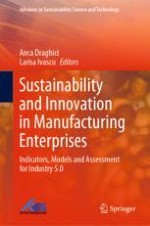This book informs and educates readers about sustainable development management, approaches and applications in manufacturing processes and presents the trends to the next economic and social paradigm: the Industry 5.0 and Society 5.0. Educational aspects, case studies from various companies, together with the analysis and synthesis of the literature and empirical experiences, define the content of the eleven chapters. Thus, this material could be considered as a starting point and foundation for researchers and practitioners interested in the present state and the evolution of the manufacturing systems. The book offers various points of view regarding the actual digital transformation of the manufacturing system.
